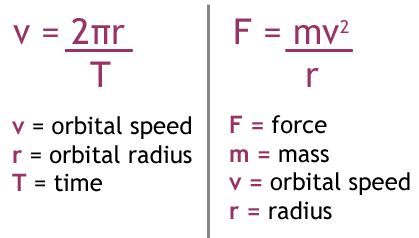Satellites: Natural, Orbits, Artificial
Edited by Jamie (ScienceAid Editor), Taylor (ScienceAid Editor)
Satellites
A satellite, in the broadest sense, means something that orbits the Earth, however, the term is usually used to refer to man-made satellites. Natural satellites are called moons.
Natural Satellites: Moons
Natural Satellites, or moons are natural objects that orbit planets. The Earth only has one moon, however of the 240 moons in our solar system, only a few are larger than our Earth's Moon. For reference, below is a diagram, to scale, of the Earth and Moon. It shows the distance between the two and how it is much larger than one might expect.
Artificial Satellites
An artificial satellite is a man-made object that is put into space. Their main purpose is for communication. Applications include telephone, television and navigation (e.g. SatNav that can be used in cars). There are two types of communication satellites.
- 1Active satellites which have equipment that allows them to collect and transmit information. #Passive Satellites. Passive satellites reflect signals from one place on Earth to another.Active Satellites.Advertisement
Orbits
The two types of orbits used by satellites are geostationary and near-polar orbits:
| Geostationary | Near Polar |
|---|---|
| This orbit is about 39,000km above the earth's surface. The satellite orbits at the same speed as the rotation of the Earth; this means that it will appears stationary in the sky.
This type of orbit is used for most television and telephone satellites because it means that antenna (i.e. your satellite dish) can be pointed in the same direction to receive the signal. |
Satellites on this orbit will travel from one pole to the other and back again, several times a day. This means the path it takes over the planet appears as a wave, because the Earth below it is rotating horizontally while it orbits vertically.
This orbit is used for mapping the Earth and weather satellites because it provides coverage of the entire earth. If you need to receive information from it you have to wait until the orbit is in range, and then the antenna will have to track its position. |
If you need to do some calculations on the orbits of objects, then these two equations should come in very handy.
Referencing this Article
If you need to reference this article in your work, you can copy-paste the following depending on your required format:
APA (American Psychological Association)
Satellites: Natural, Orbits, Artificial. (2017). In ScienceAid. Retrieved Apr 27, 2024, from https://scienceaid.net/physics/space/satellites.html
MLA (Modern Language Association) "Satellites: Natural, Orbits, Artificial." ScienceAid, scienceaid.net/physics/space/satellites.html Accessed 27 Apr 2024.
Chicago / Turabian ScienceAid.net. "Satellites: Natural, Orbits, Artificial." Accessed Apr 27, 2024. https://scienceaid.net/physics/space/satellites.html.
If you have problems with any of the steps in this article, please ask a question for more help, or post in the comments section below.
Comments
Article Info
Categories : Space
Recent edits by: Jamie (ScienceAid Editor)






